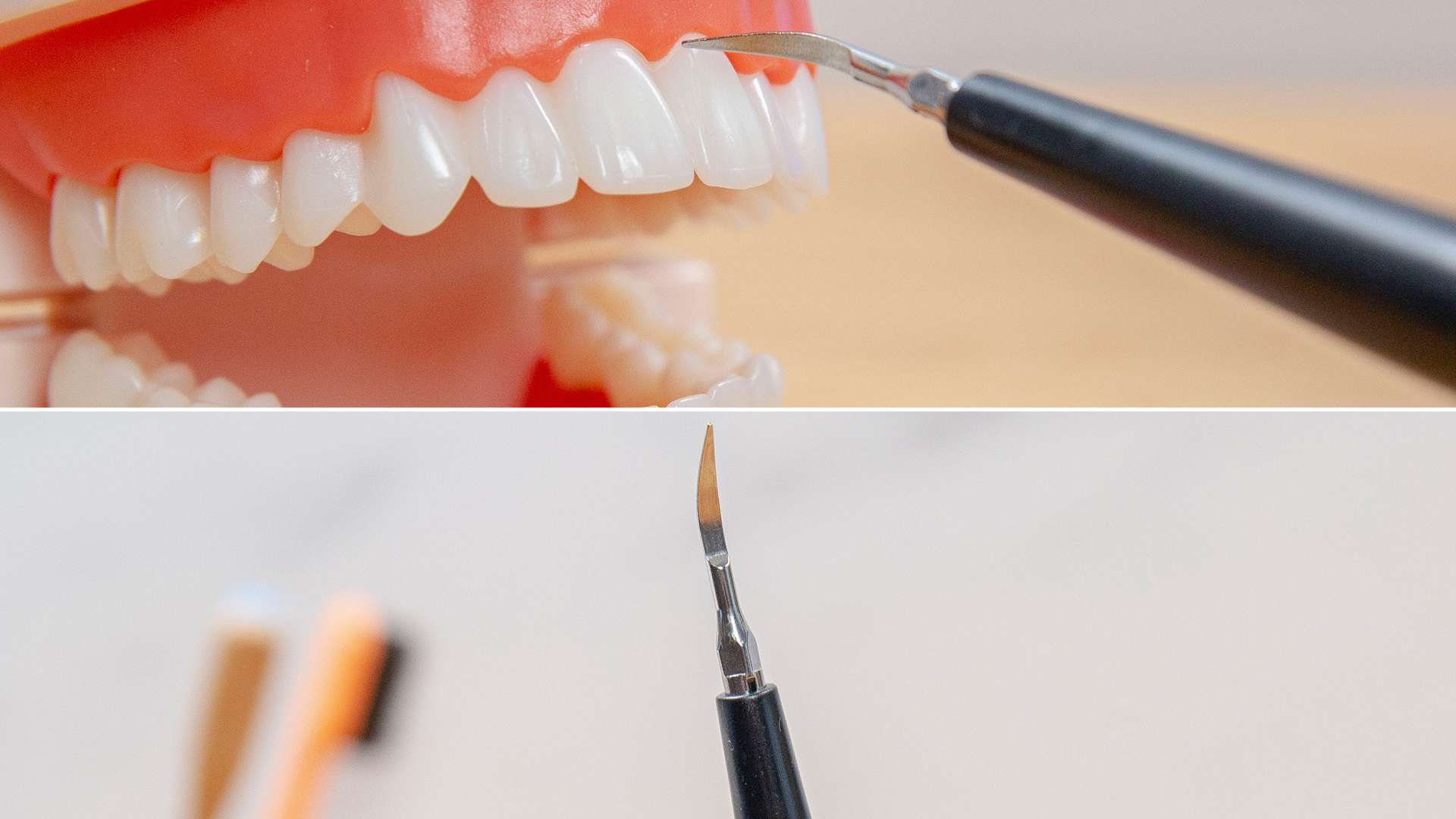
A dentist's advice
DIY ultrasonic cleaning has gained prominence recently, and an increased number of products are being advertised for it.
But that doesn't mean it's a good idea.
It is unnecessary for plaque removal, and you can't use it to remove tartar instead of going to the dentist.
An ultrasonic tooth cleaner that you can use at home might sound like a good idea. You might be hoping this will save you a trip to the hygienist. But alas, it's too good to be true.
Having tested a few of these products, in this article I give my opinion and advice as a dentist.
What is an ultrasonic tooth cleaner?
I am talking about ultrasonic tooth cleaners that are marketed for you to use at home. These are different to the scalers used for professional cleaning.
These are products you can buy online and in shops.
These products make claims that they remove plaque, tartar and stains by using vibrations.
They typically have a metal tip, although some also come with alternative tips such as a rubber based cleaner. They are powered devices, using removable or rechargeable batteries.
DIY ultrasonic tooth cleaners can be called a few different things. Names I have come across include:
- Ultrasonic Tooth Cleaner
- Sonic Home Dental System
- Electric Plaque Removal Tool
- Electric Interdental Brush
- Electric Dental Calculus Remover
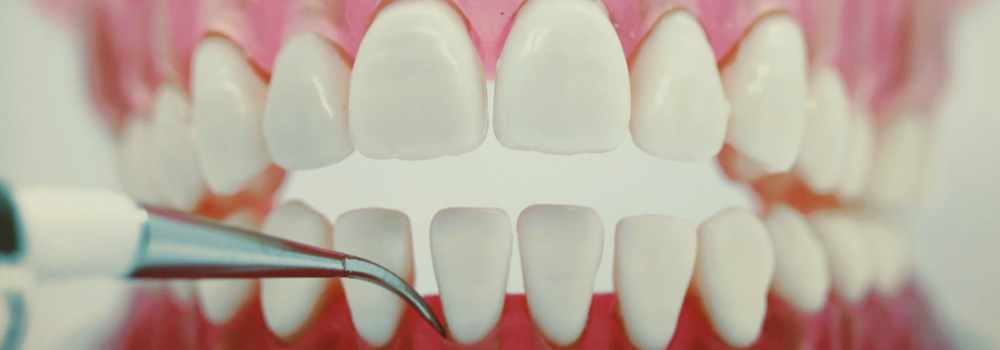
Why it's a bad idea to use products like these at home
We purchased and tested two different types of at home dental scalers.
After trialling two different products, I can better explain the problems with at home calculus removers.
The potential problems are divided into damage they can do in the mouth and false manufacturers' claims.
Ultrasonic cleaners will damage your teeth and gums
DIY dental scalers can damage the gums. The sharp metal tip will traumatise the gum if used incorrectly. High vibration rate will also irritate the gum disease and cause damage, especially because there is no water flow.
Ultrasonic scalers can dent and scratch the enamel surface if used incorrectly. This is also true for professional scalers, which is why, as dentists, we are trained in how to use them safely.
The at-home ultrasonic cleaners can damage existing dental work. This includes white composite fillings and metal fillings. They could also scratch crowns and veneers too. Scratching these surfaces will make them more prone to staining and plaque buildup.
Using a scaler which has high vibrations without water can cause the tooth to overheat. This will damage the nerve of the tooth in the pulp. Ultimately, this can be irreversible and result in the tooth dying off. In the models I tested, they did not vibrate fast enough to produce heat.
Such instruments bought in a shop and used at home are not sterile. You could, unknowingly, bring harmful bacteria into your mouth and underneath your gums which could cause an infection.
You cannot clean them effectively at home. When these go in the mouth, they pick up the bacteria that are on your teeth and under your gums. Cleaning products you have at home will not full clean the surfaces of the scaling tips.

Beware of false promises from manufacturers of DIY scalers
At home ultrasonic scalers don't really work.
It is very difficult to remove stains from teeth using these products. I have only very light staining and found this a challenge to remove, even when using the correct movements I know from dental training. It is unlikely you will get the effect you desire at home.
I am not convinced they will remove tartar/calculus as promised either.
The manufacturers are claiming these are safe, even for children. The JML manual says that children from age 8 can use the product, as well as "persons with reduced physical, sensory or mental capabilities". I would disagree. Most children don't have the right dexterity to be able to brush effectively, let alone use a sharp metal instrument in their mouth!
By purchasing these products you will be wasting your money. The extra plastics and materials used place an unnecessary burden on the environment for an item that doesn't work.
Products I tested
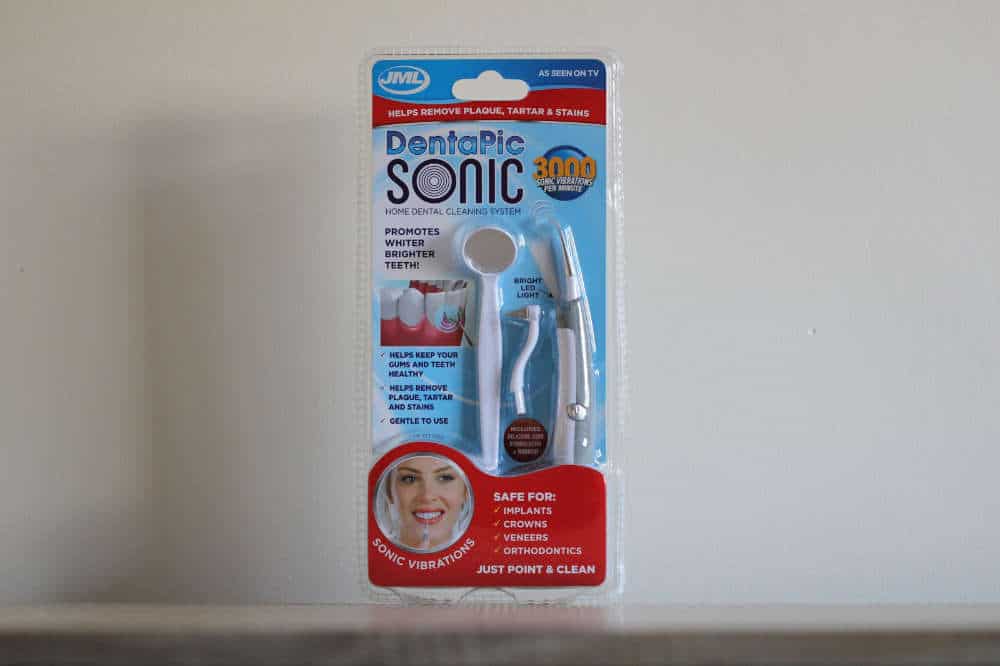
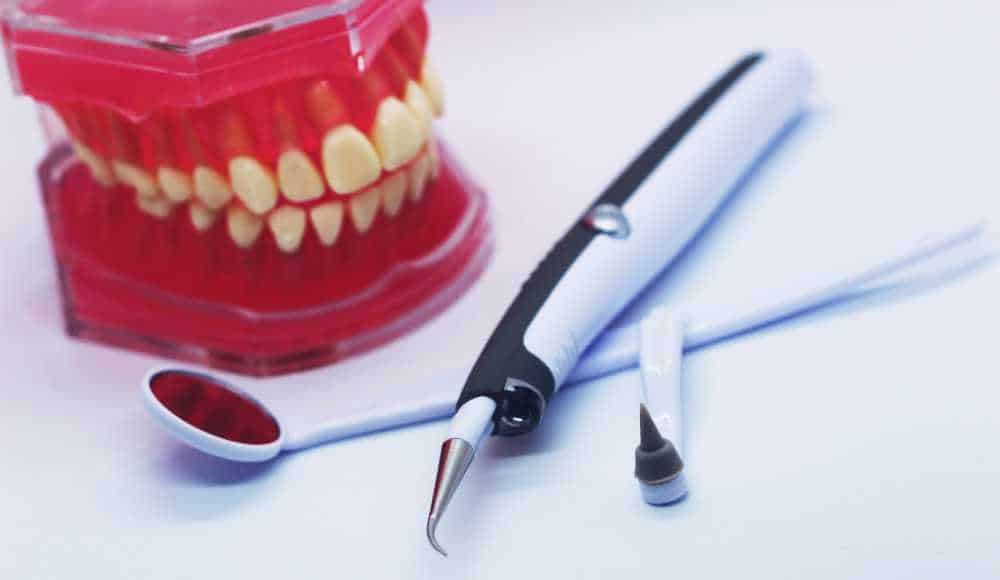
The first was the JML DentaPic Sonic (picture above). I unboxed it, read the manual and set it up to go.
The handle has an on/off button and a light.
My first thought was about how sharp the metal tip is. I would strongly advise against anyone except adults with good mobility putting this anywhere near their teeth or gums!
I tried it on my fingernail first, and was surprised by the power output. Next I tried it on my teeth. I have a small amount of staining between my lower central incisors so thought I should start there.
Does the DentaPic Sonic remove stains? Yes. But it took a long time and it didn't even manage to completely remove a small stain. The sharp tip also actually scratched the enamel surface a little bit and damaged the white filling material in place for my Invisalign treatment.
I also tried the scaler on a mock up of calculus. I applied PolyFilla (a multipurpose hole filler for walls) to a denture and allowed it to dry. I then used the scaler on the denture. It did cause the top layer to flake off, but otherwise it just scratched into the white filler material.
Will it remove tartar? Unlikely. On using it with the metal tip, I can feel that the vibrations are not enough to remove calculus. The metal tip was sharp on the gums, and I really would advise you to avoid using this unless you know what you are doing.
Even if you do have the skills to not damage the gums, the scaler doesn't actually do anything.
I also tried the rubber tip. This was useless. The vibrations that come from the hand tool aren't transmitted down the silicone (due to it being a flexible material). So this also doesn't remove any stains or tartar. It's not fine enough to clean between the teeth to replace other interdental cleaning methods either.
Overall, a waste of money!
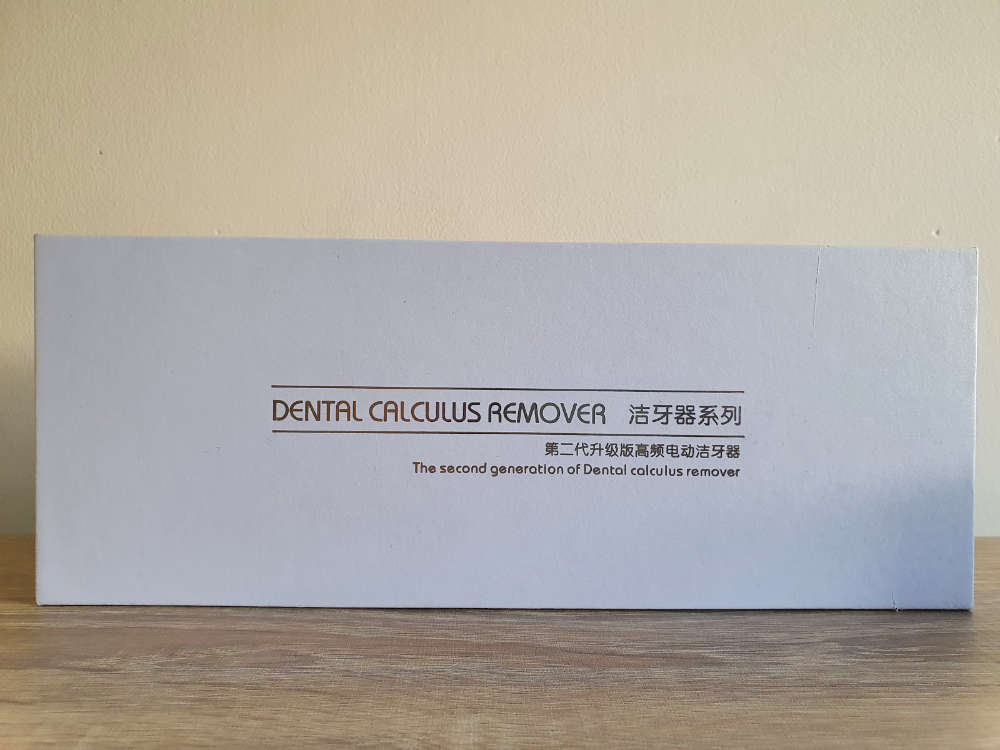
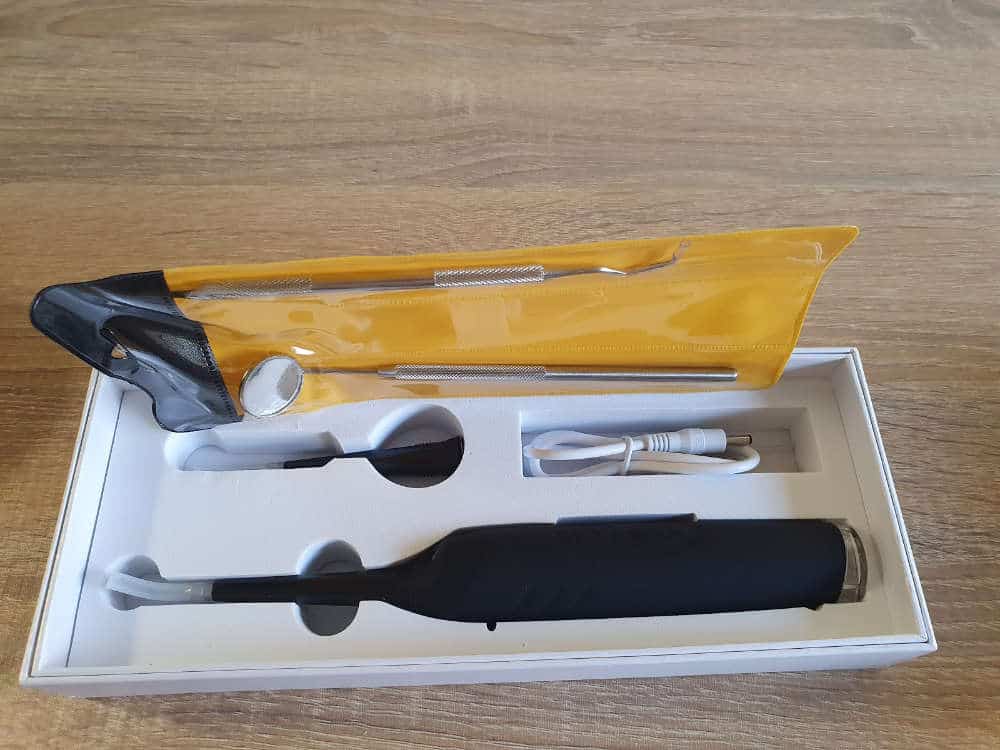
The second product was from Amazon — "the second generation of Dental calculus remover" (pictured above). This rechargeable option came in a white box.
There are two different metal head attachments. The scaling tips actually look very similar to the professional scaler tips. The handle has three different speeds and an in-built light.
I read the instructions, whilst waiting for the handle to charge. Reassuringly, this product advises against children using it.
Again, I first tried it on a fingernail to get a first impression. This one seems to have a higher rate of vibrations, in my opinion. This time I tried it on a bit of staining between the upper left canine and lateral incisor.
It does definitely remove stains. It takes a while though. Again, when I tried it on the composite buttons for my retainers, there was some damage.
When I used this scaler on the Polyfilla'd denture, it was less effective than the JML scaler. Like the JML scaler, it flaked off the very fine dusty layer of filler. It also scratched into the filler layer. But it definitely did not remove the filler in the way I would expect a scaler to.
Will it remove tartar? Maybe. But probably not.
Similar products to those I have tested
Although I haven't tested the following products, the specifications are very similar to those I have tested and therefore they are unlikely to be effective.
But regardless of their effectiveness, the same advice applies about them having the potential to damage your teeth and gums, and therefore I don't recommend using them:
- Smirk ultrasonic tooth cleaner
- Sonoshine
- Smile therapy
- Teeth saviour
- Dentrie
- Ivory Oral
- Sanipik
- OnlySmiles
- MyOralGift
- Densine
If you come across any products similar to these, please let us know in the comments section below.

How do these differ to ultrasonic cleaning you receive at the dentist?
Professional ultrasonic scalers are used by dentists and dental hygienists. They remove tartar and staining from above and below the gum line. They can be powered via the dental chair or as a separate unit.
These at home scalers do not move as fast as professional scaling tips. Professional ultrasonic scalers vibrate at a speed that is faster than you can hear (ultra sonic). This is somewhere between 20,000 and 45,000 times per second. There are also profesional sonic scalers that vibrate 3000 to 8000 times per second. The tips I tested were less than this.
These at DIY scrapers do not have a water supply. All professional scalers have a water supply. The purpose of this is to help cool down the metal tip. The water flow also helps the cleaning mechanism underneath the gum level.
It is possible for professional ultrasonic scalers to damage the enamel surface of the teeth and dental work. This is also true for the DIY tartar removers.
In fact, a lot of the problems I have listed for these at home scalers are also true for professional cleaning. The at home scalers move fast enough to cause damage, but not enough to be effective!
The main difference is that dental professionals know how to handle the tools to avoid causing damage. They can also identify any damage caused and remedy it, something which is not possible at home.

What to do if you are considering buying one of these products
Simple answer: please don't buy an ultrasonic tooth cleaner to use at home.
There is no need to purchase one of these DIY scrapers to remove plaque. Plaque does not have a strong bond to your teeth and can be removed with toothbrushing and interdental cleaning.
You aren't able to use anything to remove tartar without going to the dentist. The bond between the tartar and the tooth surface is too strong.
Instead of buying one of these products, invest your time and effort into getting into a good oral hygiene routine.
Preventing plaque build up will improve your oral health. Removing plaque helps prevent tartar and staining.
Small changes in your diet can also reduce staining. For example, avoiding foods that stain your teeth, or rinsing after having staining drinks such as coffee.
Video: why routine is important for your dental health
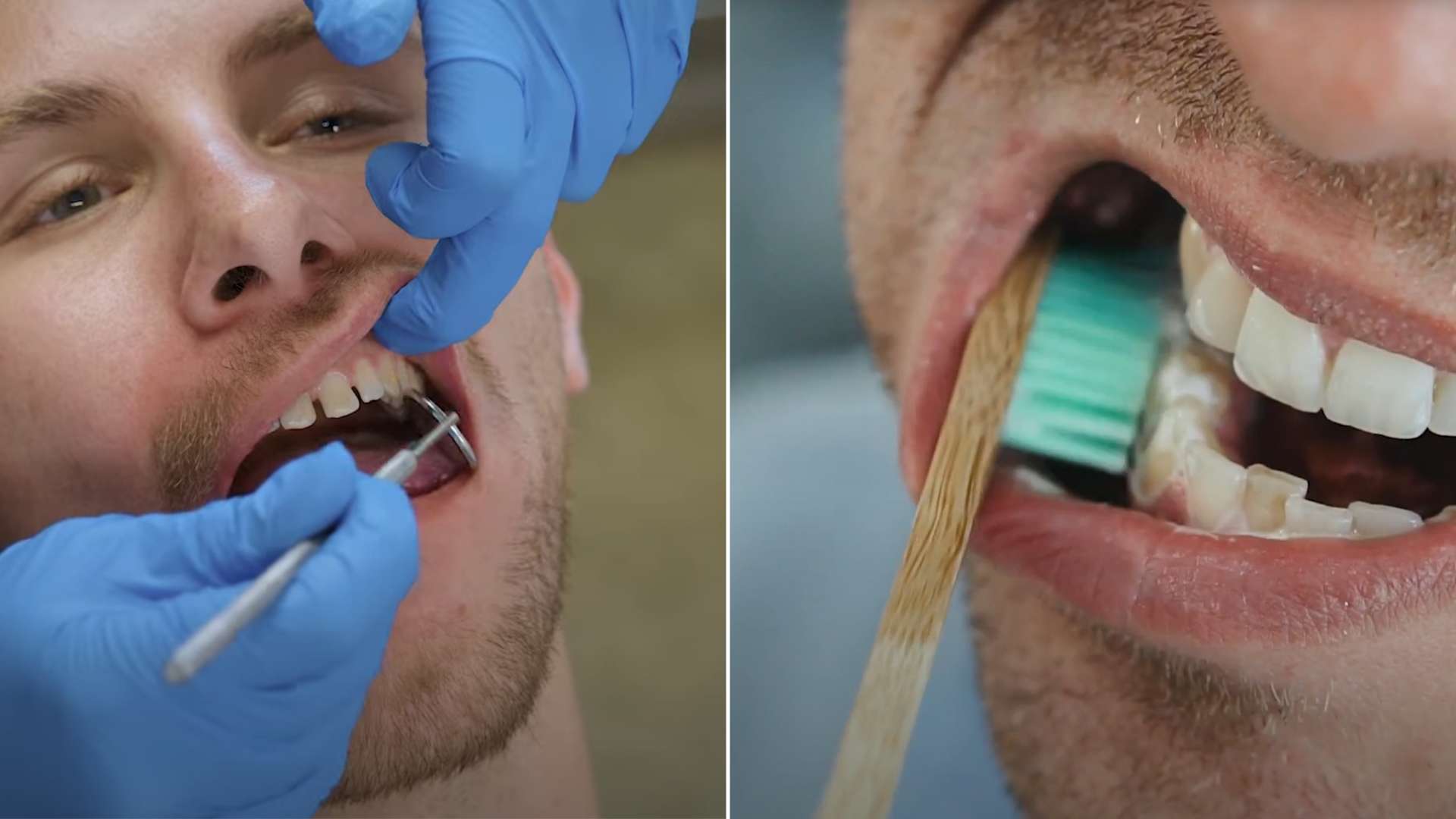
Electric toothbrushes are more effective at removing plaque. A good toothbrush would be a better investment than one of these scrapers.
Make sure you are cleaning in between the teeth. Interdental cleaning is important for plaque removal and gum health.
Book and appointment with a dental professional for calculus and stain removal. They may do a scale and polish. An alternative treatment would be using an air flow or similar.




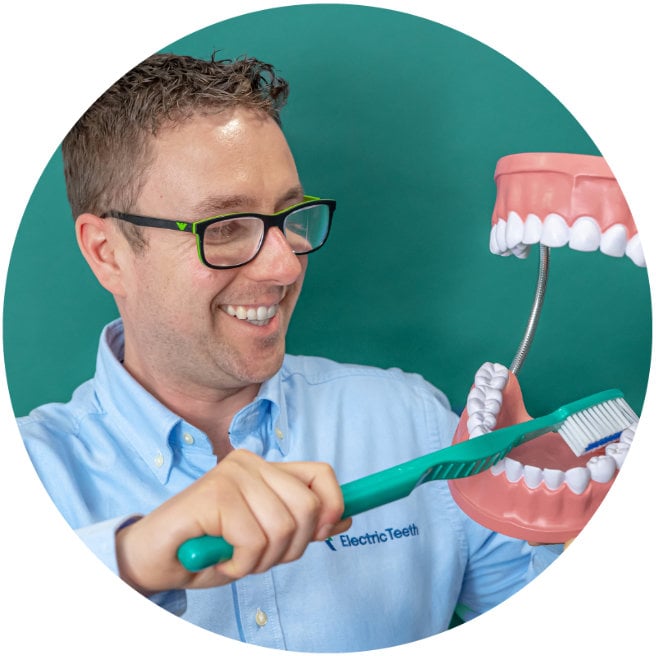
I have a cleaaner I bought on line. But it is nothing like the ones you describe. My dentist was genuine in her surprise at how clean my teeth were.
It fits in my mouth over my upper and lower teeth and sonically brushes them. I first fill my mouth with toothpaist by applying a normal quantiy to my manual brush and mixing this in my mouth. Then use the electronic çleaner.
The product has what appears to be micro fibers and I do not nkow if this is the secret to the product success.
My dentist suggested a water product to use rather than floss, I bought this but find it rather messy and only useiton a low pressure as I was worried it my damage mouth. As yet I have not revisited my dentist and will speak about itwith her.
Uncortunately I do notknow the name of the product I first described above. I must mention that the charging methodology is poor, and I have been loking for an advertisement so I can ask then manufacturer if they have an upgraded product yet that addresses this problem.